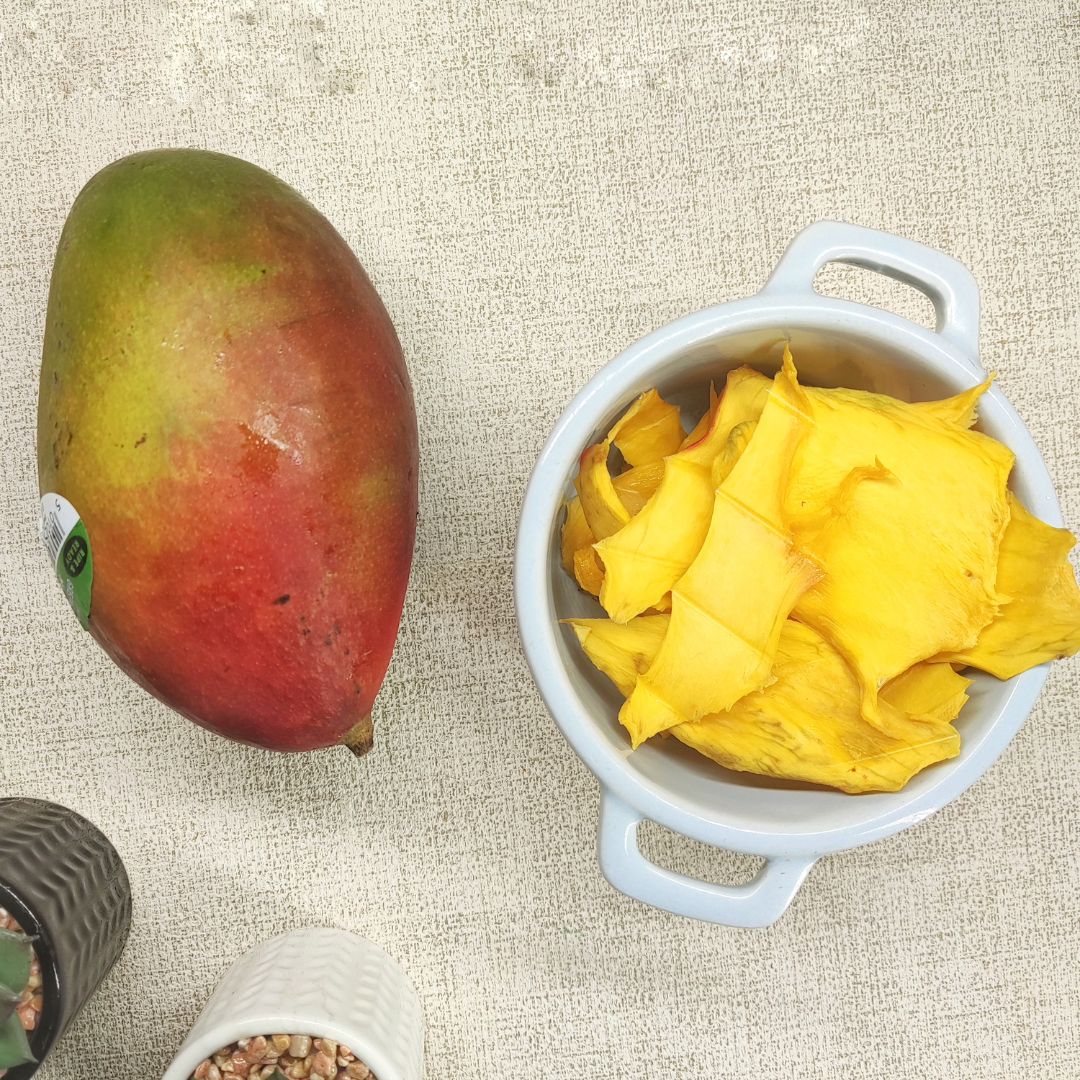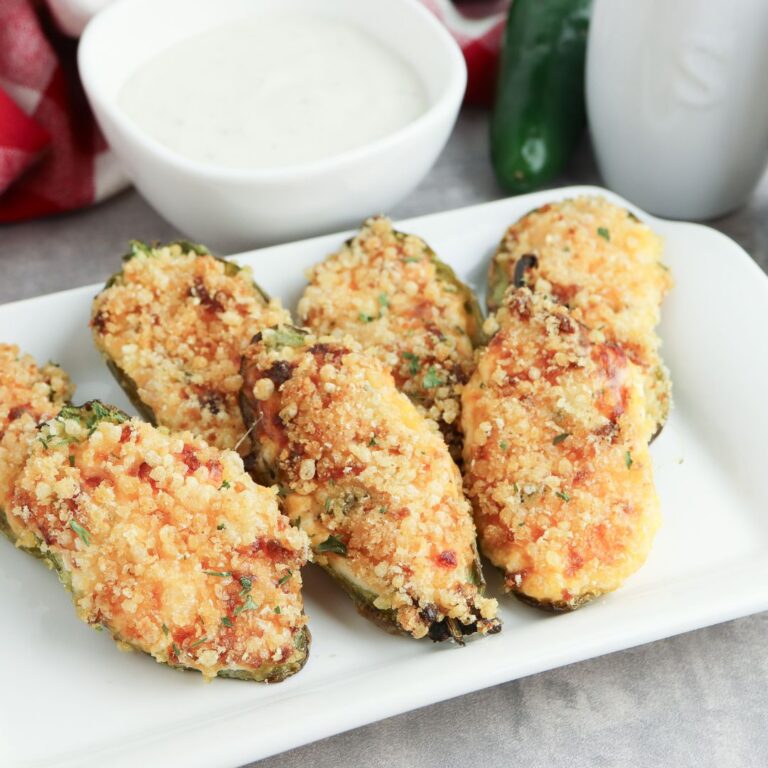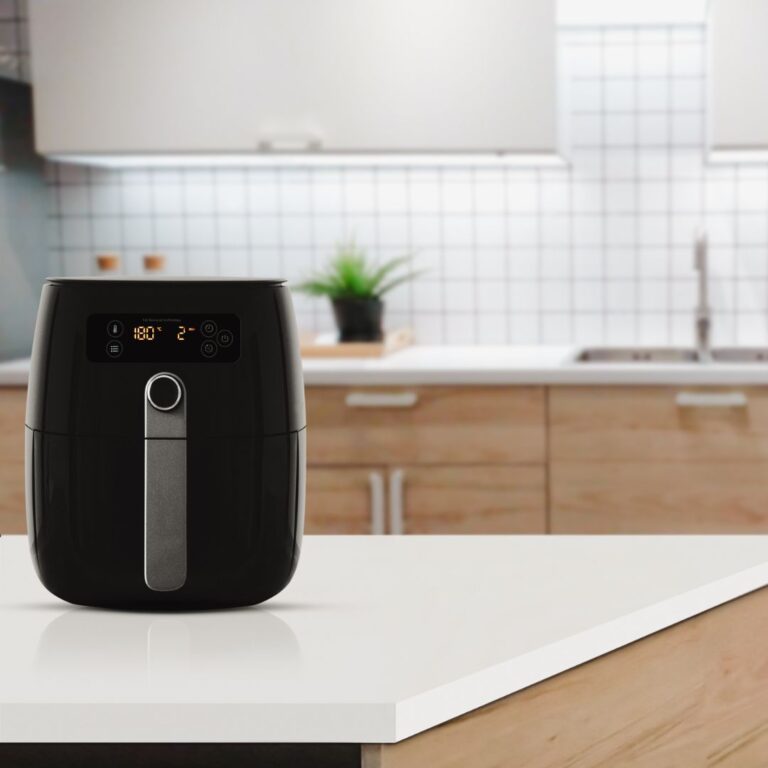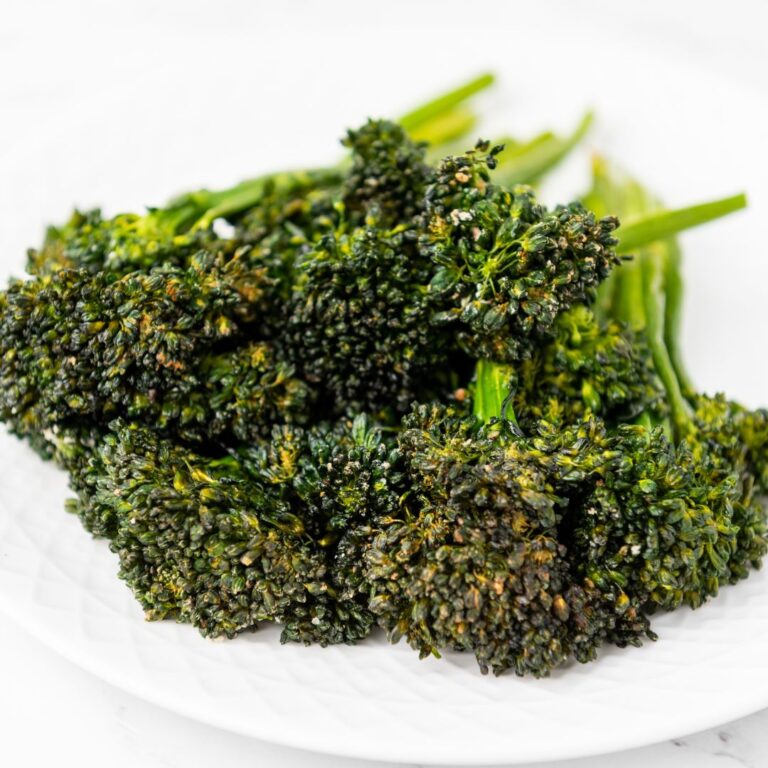Excited to share my step by step process on how to dehydrate Mangoes in an Air Fryer. Dehydrating mangoes in my air fryer has been a great way to enjoy this delicious snack with a long shelf life. Perfect for healthy snacking, school lunches, It has been a tasty addition to granola bars, dehydrated mangoes offer a sweet taste that’s both natural and satisfying.

I have been using the dehydrator setting of my Ninja 15in1 Air Fryer, if your air fryer do not have the dehydrator setting, you can use a lower temperature in your air fryer. Here’s a simple step-by-step guide to making dehydrated mangoes, ideal for air fryer beginners and seasoned enthusiasts alike.
My PRO Tips for the Perfect Dehydrated Fruits
Make sure to go with the dehydration process in smaller pieces or small batch(es) at a time, might take a long time but worth it in the end.
Do not overcrowd the air fryer basket with your sliced mangoes dried fruit.
Aim for even fruit slices
As much as possible, do not use high temperatures in order not to have chewy

Ingredients:
- Fresh mangoes
- Lemon juice (optional, to preserve color)
Equipment:
- Air fryer with dehydrate function
- Paper Towel
- Parchment paper (optional for easier cleanup)
- Airtight container or a zip loc bag for storage
How to Dehydrate Mangoes in an Air Fryer
Preparation:
- Peel the mangoes and cut into thin slices. Aim for even slices to ensure uniform drying.
- Optionally, toss mango slices in lemon juice to help preserve their vibrant color – I prefer mine plan, without added lemon.
- Place a paper towel over the sliced mangoes and apply gently pressure absorb fluids.

Arranging Mangoes:
- Place mango slices in a single layer on the air fryer racks or in the basket. Only use parchment paper if using a single layer and not stacking dehydrator trays.

Dehydrating:
- Set your air fryer to the dehydrate setting, around 135°F to 145°F. The low temperature and hot air circulation ensure the best results, preserving the fruit’s sweet taste while removing water content.
Drying Time:
- Expect the dehydrating process to take between 4 to 6 hours, depending on the thickness of your slices and the water content of the mangoes.
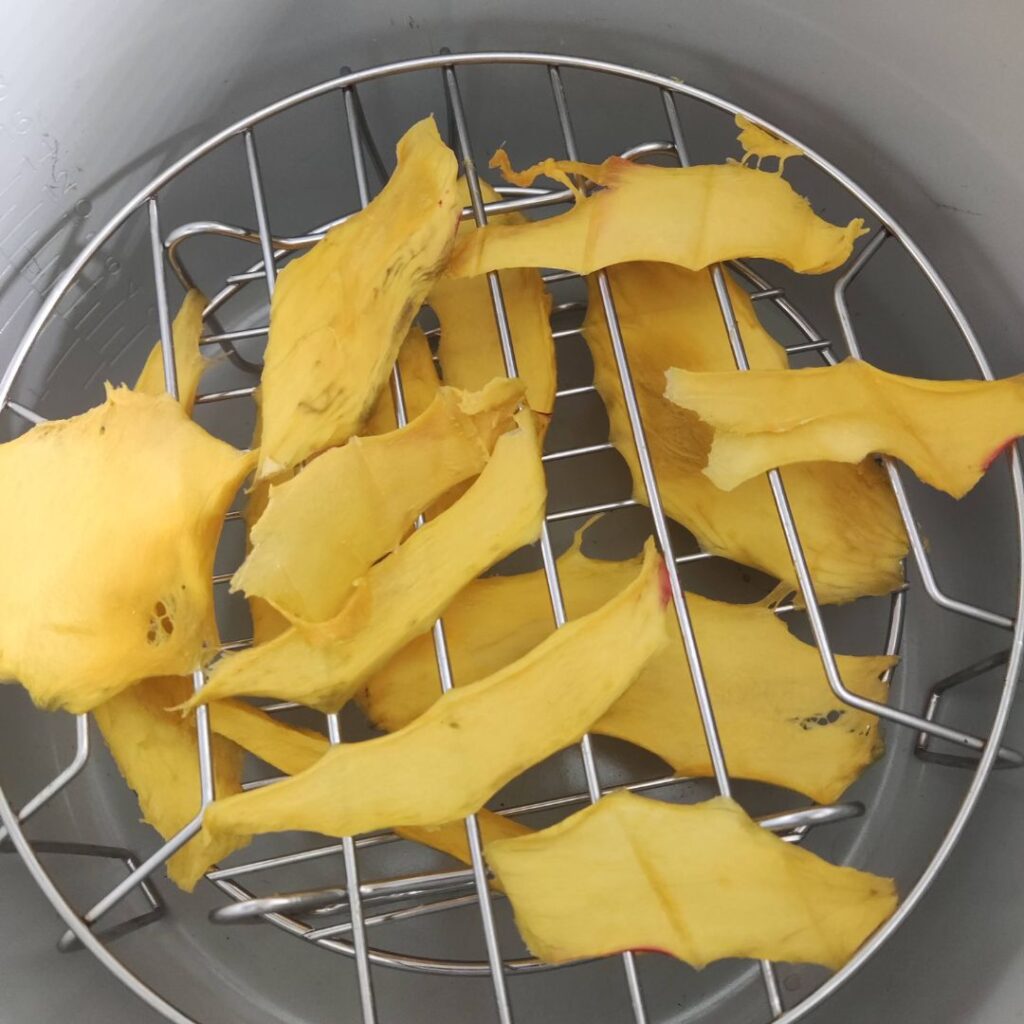
Checking for Doneness:
- The mangoes are made flexibly and have a leather-like texture, not sticky or moist.
Cooling and Storage:
Allow the dehydrated mangoes to cool before transferring them to an airtight container. Store in a cool, dry place.
Can I dehydrate other fruits at the same time? Yes! Dehydrating different fruits like apple slices, banana chips, or dehydrated strawberries alongside mangoes is a good idea. Just remember to slice them evenly for consistent drying.
How do I know when the mangoes are fully dehydrated? The mango slices should be leathery and not sticky to the touch. If unsure, let them cool for a few minutes; they should be chewy, not moist.
What if my air fryer doesn’t have a dehydrate function? You can set your air fryer to the lowest temperature setting it has, ideally around 135°F. The process may take longer, so keep an eye on the texture.
How long can dehydrated mangoes last? Properly stored in an airtight container in a cool, dry place, they can last for months, making them a fantastic, healthy snack option.
Can I use frozen mangoes? Yes, but thaw and pat them dry before dehydrating. Adjust the drying time as needed since they might contain more water.
Dehydrating mangoes in an air fryer is an easy and efficient way to produce a healthy snack that retains the fruit’s natural sweetness and nutritional value. Perfect for air fryer beginners, this process is a great way to kickstart your dehydrated fruit kick, with mangoes being just the starting point for exploring a variety of dehydrated delicacies.
More about dehydrating fruits and in depth post on each fruit can be seen here: Strawberry slices, apple chips, orange slices and air fryer pineapple
How to Tell if Mangos Are Ripe to be dehydrated
Telling if mangos are ripe and ready to enjoy or dehydrate is simple when you know what to look for. Here are the key indicators to help you determine the ripeness of a mango:
Color: While color can be an indicator of ripeness, it’s not always the most reliable method since mangos come in a variety of colors that can range from green to yellow, orange, red, or a combination thereof when ripe. However, most mangos will show a change in color from green to some extent of their ripe color palette as they mature.
Feel: This is one of the best ways to tell if a mango is ripe. Gently squeeze the mango; a ripe mango will give slightly under pressure, indicating softness inside. It should feel slightly soft but not mushy. An unripe mango will feel firm to the touch.
Smell: Sniff the stem end of the mango. Ripe mangos will emit a fruity, sweet aroma. The stronger the scent, the riper the mango. If there’s no smell, the mango is likely not yet ripe.
Wrinkles on the Skin: As some mangos ripen, the skin may begin to show slight wrinkles. This is often a sign that the mango is very ripe and possibly at its peak of sweetness. Not all varieties exhibit this trait, so it’s best used in conjunction with other methods.
Firmness vs. Softness: The mango should have a uniform softness all around. If only one end is soft but the other end is still firm, the mango might need a bit more time to ripen evenly.
Weight: Ripe mangos often feel heavier for their size, indicating juiciness and full development of the fruit’s water content.
How to Ripen Mangos
If you find that your mangos are not yet ripe, you can easily ripen them at home:
- Leave at Room Temperature: Place unripe mangos on a kitchen counter at room temperature. This process may take a few days, depending on how underripe the mangos are when you start.
- Paper Bag Method: To speed up ripening, place mangos in a paper bag and fold the top over. You can also add an apple or banana in the bag to increase the amount of ethylene gas circulating, which helps in ripening.
- Check Daily: Regardless of the method, check your mangos daily for ripeness using the above indicators.
There you have it, my comprehensize steps on How to Dehydrate Mangoes in an Air Fryer! Let me know your expereince when you try thsi method.
About the Author
I am Seun, and I love to share my first-hand experience using multiple air fryers. Stick around for yummy delicacies made from the air fryer and many amazing tips on using your newfound Kitchen appliance – the air fryer!

